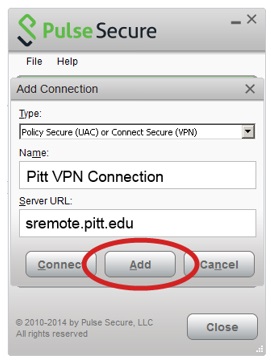

- Pulse secure client logs off how to#
- Pulse secure client logs off install#
- Pulse secure client logs off full#
- Pulse secure client logs off code#
- Pulse secure client logs off iso#
Note: It is recommended to save a copy of the system.cfg file, as soon as you upload a certificate in this manner. Click Import and select your previously downloaded certificate in PXCS7 or DER format.
 At the bottom of the new window, in the “Import signed Certificate” section, click on “Browse”.
At the bottom of the new window, in the “Import signed Certificate” section, click on “Browse”. Pulse secure client logs off install#
Under Certificate Signing Requests, click the Pending CSR link corresponding to the certificate you want to install. Pulse secure client logs off code#
Use the CSR code during the order process with your SSL vendor.Īfter the CA signs your SSL Certificate and sends the necessary SSL files to your inbox, you need to download the ZIP folder and extract its contents on your device If you’ve generated the CSR in Pulse Secure:. Copy-paste the entire CSR code including the BEGIN CERTIFICATE and END CERTIFICATE tags into a Notepad document. You can see it by scrolling down the screen. Congrats, you have successfully created your CSR code. Double-check the info you’ve just entered and click Generate CSR. Random Data: enter some random characters to augment the random key generator. Email address: provide a valid email address. Pulse secure client logs off iso#
Country/Region: enter the two-letter ISO country code. Pulse secure client logs off full#
State: write the full name of the state where your business is located. Locality/City: include the city where your business is officially registered. Unit Name: name the department within your company requesting the SSL Certificates. Organization Name: specify the full legal name of your company. Note : If you have a wildcard certificate, add an asterisk in front of the domain name. Common Name: enter the FQDN (fully-qualified domain name) to which you want to assign your new SSL Certificate. Next, in the New Certificate Signing Request window, submit the required information:. Under Certificates issued to click on the New CSR button. Navigate to System > Configuration > Certificates > Device Certificates. Log into your Pulse Secure admin dashboard. To generate a CSR code on Pulse Secure SSL VPN, please follow the steps below: Along with the CSR code, you will also generate your private key, which you’ll use later during the installation. The CSR code is a block of encoded text with your contact details such as the domain you want to secure, and the company that owns the domain. Where to buy the best SSL Certificate for Pulse Secure? Generate a CSR code on Pulse SecureĬreating a CSR (Certificate Signing Request) is part of the SSL certificate application process. Install an SSL Certificate on Pulse Secure Use the links below to jump between sections. If you’ve already generated the CSR code and received the SSL certificate on your email, feel free to skip part 1. In the later sections, you will also find some interesting facts about Pulse Secure, and discover the best place online to shop for affordable SSL Certificates. 
Pulse secure client logs off how to#
The only potentially integration issue encountered thus far looks to be some limited capabilities in url sub-domain masking - not that it wasn't possible, but that it could open up some security issues elsewhere if this was enabled, so this has pushed forth a requirement to pull specific url's without masking when getting source/destination url requirements.This guide provides step by step instructions on how to generate a CSR code and install an SSL Certificate on Pulse Secure SSL VPN. Also, on our server environments for which I have worked with our network teams in facilitating integrations, found the ability to now filter by url's rather than ip's to be quite a bit more effective and easier to maintain going forward, not having to worry about numerous specific ip's that need to be pulled from source/destinations and subsequently maintained on an ongoing basis if they change. Turning on our laptops allowed us to be immediately connected to our corporate VPN without re-authentication each and every time we log into our laptops, which had been both a time-consuming and potentially productivity limiting factor (particularly if there were technical issues). As one of the earlier adopters of the use of the VPN on our new laptops, found the user experience to be excellent with very good stability. Zscaler has recently been deployed at various points across our enterprise to secure both VPN's for workstations as well as for server environments.







 0 kommentar(er)
0 kommentar(er)
